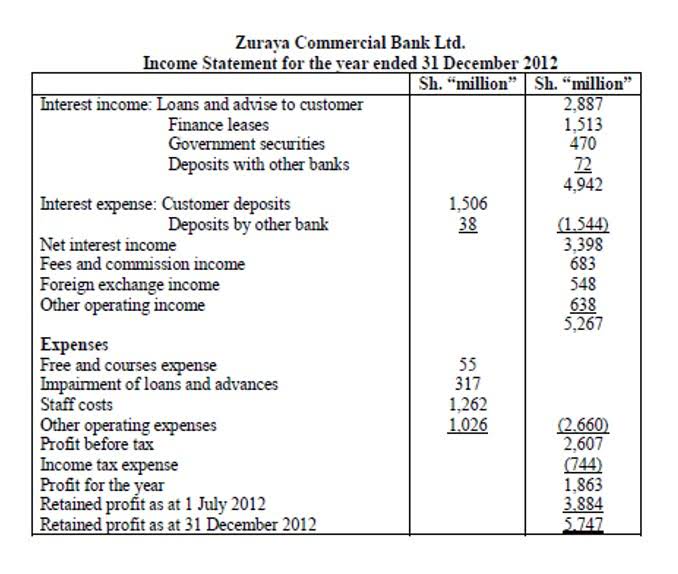At the end of the useful life, fixed assets still exist and of course, they still contain some value. Some plant assets may contain scrap value of a few hundred up to a few hundred thousand. This means that the computer will be used by Company A for 4 years and then sold afterward. The company also estimates https://www.online-accounting.net/the-difference-between-expenses-and-assets/ that they would be able to sell the computer at a salvage value of $200 at the end of 4 years. The estimated salvage value is deducted from the cost of the asset to determine the total depreciable amount of an asset. This amount needs to deduct from the total amount to calculate the depreciation expense.
These are services that are set by Third party companies in order to help us to understand and improve our website, remember preferences and to display advertising. Some assets may have a scrap value of zero, indicating that they are expected to have no residual worth after being fully depreciated. Scrap value is the estimated value of an asset’s components or materials when the asset is no longer in use or at the end of its useful life. Over 1.8 million professionals use CFI to learn accounting, financial analysis, modeling and more. Start with a free account to explore 20+ always-free courses and hundreds of finance templates and cheat sheets.
If the scrap value is substantial, it can impact the total depreciation claimed over an asset’s life. For examples of scrap value that is meant to be the disposal, residual, or salvage value of a plant asset, see our major topic Depreciation. The scrap value of an asset can be negative if the cost of disposing of the asset results in a net cash outflow that is a contributing factor in the scrap value. For the past 52 years, Harold Averkamp (CPA, MBA) has worked as an accounting supervisor, manager, consultant, university instructor, and innovator in teaching accounting online. Adam Hayes, Ph.D., CFA, is a financial writer with 15+ years Wall Street experience as a derivatives trader. Besides his extensive derivative trading expertise, Adam is an expert in economics and behavioral finance.
What Is Scrap Value?
In financial accounting, capital assets or long-term assets, such as machinery, vehicles, and furniture, have a useful life. In financial accounting, the term scrap value might be used instead of the more common terms of salvage value, disposal value, or residual value when calculating the depreciation of an asset used in the business. In this situation, scrap value is the expected or estimated value of the asset at the end of its useful life. Depending on the method of depreciation adopted by a company, such as the straight-line method or declining-balance method, the scrap value of an asset will vary.
The Internal Revenue Service (IRS) requires companies to estimate a “reasonable” salvage value. The value depends on how long the company expects to use the asset and how hard the asset is used. For example, if a company sells an asset before the end of its useful life, a higher value can be justified. Typically, companies set a salvage value of zero on assets that are used for a long time, are relatively inexpensive, or if the technology becomes obsolete quickly (5-year-old printer, 4-year-old laptop, etc.). The concept can also be applied to the residual materials that are left over after a production process. For example, there is scrap metal left over after pieces are cut from a sheet of steel.
- In the insurance industry, scrap value is the money that can be recovered for a damaged or abandoned property.
- The company expects to use the vehicle for 5 years which is a useful life.
- It is also known as scrap value or residual value, and is used when determining the annual depreciation expense of an asset.
- The machine is estimated to have a scrap value of $2,000 at the end of its useful life.
- Scrap value is the estimated value of an asset’s components or materials when the asset is no longer in use or at the end of its useful life.
Scrap value is the worth of a physical asset’s individual components when the asset itself is deemed no longer usable. The individual components, known as scrap, are worth something if they can be put to other uses. Sometimes scrap materials can be used as-is and other times they must be processed before they can be reused.
AccountingTools
In auto or property insurance, the estimated scrap value is subtracted from any loss settlement if the insured keeps the property. Having an estimate for the scrap value of a long-term asset can help a company figure out its annual depreciation cost, which is an important measure since it affects the level of a company’s net income. The scrap value of an asset can be negative if the cost of disposing the asset results in a net cash outflow that is a contributing factor in the scrap value. For example, consider the value of land owned by a company that only slightly went up in value by the end of its useful life.
The value of an asset that has exceeded its useful life is referred to as the scrap value. So the higher the depreciation expense the lower the company’s net profit. When a company estimates a huge scrap value, it will reduce the depreciable amount and also decrease the deprecation expense. The scrap value has an indirect impact on both the income statement and balance sheet. As we know, it can influence the depreciable amount and depreciation expense.
Fixed asset balance will present in the balance sheet as the net book value, cost less accumulated depreciation. If the depreciation is lower, it will increase the fixed assets’ net book value. Scrap Value is the estimated balance of an asset after it is fully depreciated. We estimate this balance so that we can calculate the depreciation expense. Due to the estimation, it can be different from the actual value at the end of useful life.
An item’s scrap value—also called residual value, break-up value, or salvage value—is determined by the supply and demand for the materials it can be broken down into. Sometimes scrap materials can be used as is; other times they must be processed before they can be reused. An item’s scrap value is determined by the supply and demand for the materials it can be broken down into.
Scrap value is the estimated cost that a fixed asset can be sold for after factoring in full depreciation. The asset that is disposed of is usually salvaged into multiple parts, with each part valued and sold separately. In financial accounting, capital assets or long-term assets, such as machinery, vehicles, furniture, etc., have a useful life. However, given that a broken down or obsolete asset may still have some residual value, some businesses can dispose of the asset by selling it for its current value.
What is scrap value?
Scrap value is a key consideration in asset depreciation, accounting, and financial decision-making. It represents the amount that can be obtained from selling the parts or materials of an asset after it has been fully depreciated or is no longer useful for its intended purpose. what is the indexation definition For example, company ABC purchases a vehicle that costs $ 100,000 to transport goods from one location to another. The company expects to use the vehicle for 5 years which is a useful life. At the end of the 5th year, it does not mean that the asset value goes to zero.
We need to minimize the difference to the acceptable level which has only a small impact on financial statements. The owner of a truck is told that the truck needs a new engine, which will cost $2,500. The owner can instead elect to sell the truck to a junkyard, which is willing to pay $600 for the truck and then sell off the parts. Thus, the owner has the choice of spending more money to keep the truck operational, or to sell the vehicle at its scrap value.
Related AccountingTools Courses
Salvage value is the amount that an asset is estimated to be worth at the end of its useful life. It is also known as scrap value or residual value, and is used when determining the annual depreciation expense of an asset. The value of the asset is recorded on a company’s balance sheet, while the depreciation expense is recorded on its income statement. In the insurance industry, scrap value is the money that can be recovered for a damaged or abandoned property.










